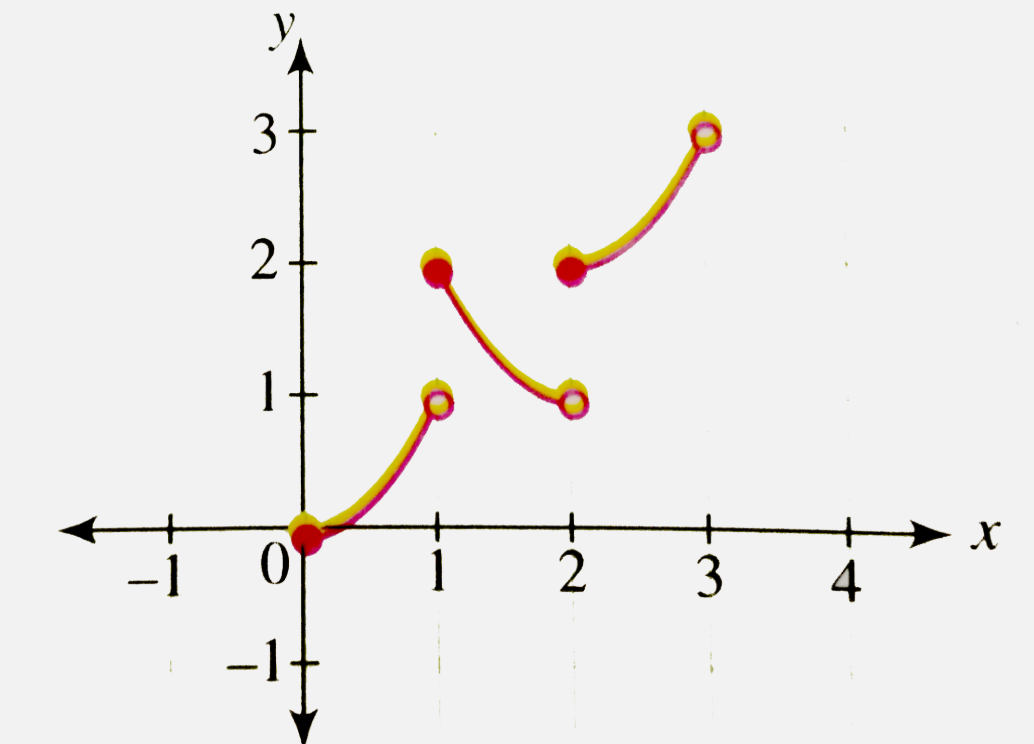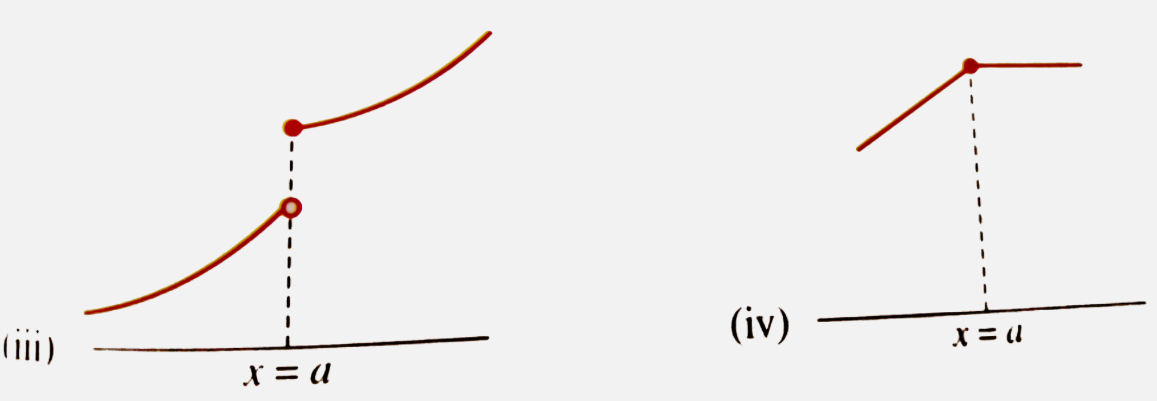For each of the following graphs, comment whether f(x) is increasing or decreasing or neither increasing nor decreasing at x = a.
(##CEN_GRA_C01_S01_018_Q01.png" width="80%">
![For each of the following graphs, comment whether f(x) is increasing or decreasing or neither increasing nor decreasing at x = a. (##CENGRAC01S01018Q01.png]() " loading="eager" src="https://d10lpgp6xz60nq.cloudfront.net/physics_images/CEN_GRA_C01_S01_018_Q02.png" width="80%" class="mx-auto" style="background:white;"> Solution in Tamil
" loading="eager" src="https://d10lpgp6xz60nq.cloudfront.net/physics_images/CEN_GRA_C01_S01_018_Q02.png" width="80%" class="mx-auto" style="background:white;"> Solution in Tamil
(i) Neither monotonically increasing nor monotonically decreasing as
(ii) Monotonically decreasing as
(iii) Monotonically increasing as
(iv) Neither monotonically increasing nor monotonically decreasing as
Topper's Solved these Questions
- GETTING STARTED WITH GRAPHSBOOK - CENGAGECHAPTER - GETTING STARTED WITH GRAPHSEXERCISE - Exercise
18 Videos
- FUNCTIONSBOOK - CENGAGECHAPTER - FUNCTIONSEXERCISE - Question Bank
21 Videos
- GRAPH OF INVERSE TRIGONOMETRIC FUNCTIONSBOOK - CENGAGECHAPTER - GRAPH OF INVERSE TRIGONOMETRIC FUNCTIONSEXERCISE - Exercise
18 Videos
Similar Questions
Does the following graph pass the vertical or horizontal line test ?

View SolutionIf there are four distinct real numbers satisfying thẻ equation ∣∣x2−4x−7∣∣=n, then number of integers in the range of n is
View SolutionDraw the graph of y=tan−1x+cot−1x
View SolutionFor each of the following graphs, comment whether f(x) is increasing or decreasing or neither increasing nor decreasing at x = a.
(##CEN_GRA_C01_S01_018_Q01.png" width="80%">

View SolutionMatch the following lists:

View SolutionWhich of the following are correct chain isomers of butane ? (i)
View SolutionDetermine the point of symmetry of a regular hexagon.
View SolutionDtermine the images of the following figure about the given line :
View SolutionMatch the following Column A to Column B

View SolutionMatch the following Column A to Column B

View SolutionMatch the following Column A to Column B

View SolutionThe inequation represented by the graph given below is :
View SolutionThe inequation that best describes the graph given below is _________
View SolutionThe inequation that best describes the following graph is _________
View SolutionIn Fig, find the value of x.
ltimg src="https://d10lpgp6xz60nq.cloudfront.net/physics_images/PS_MATH_IX_C12_S01_032_Q01.png" width="80%"gt
View SolutionAt x=0, value of (dy)/(dx) is : ltimg src="https://d10lpgp6xz60nq.cloudfront.net/physics_images/ALN_PHY_R04_E01_024_Q01.png" width="80%"gt
View Solution
